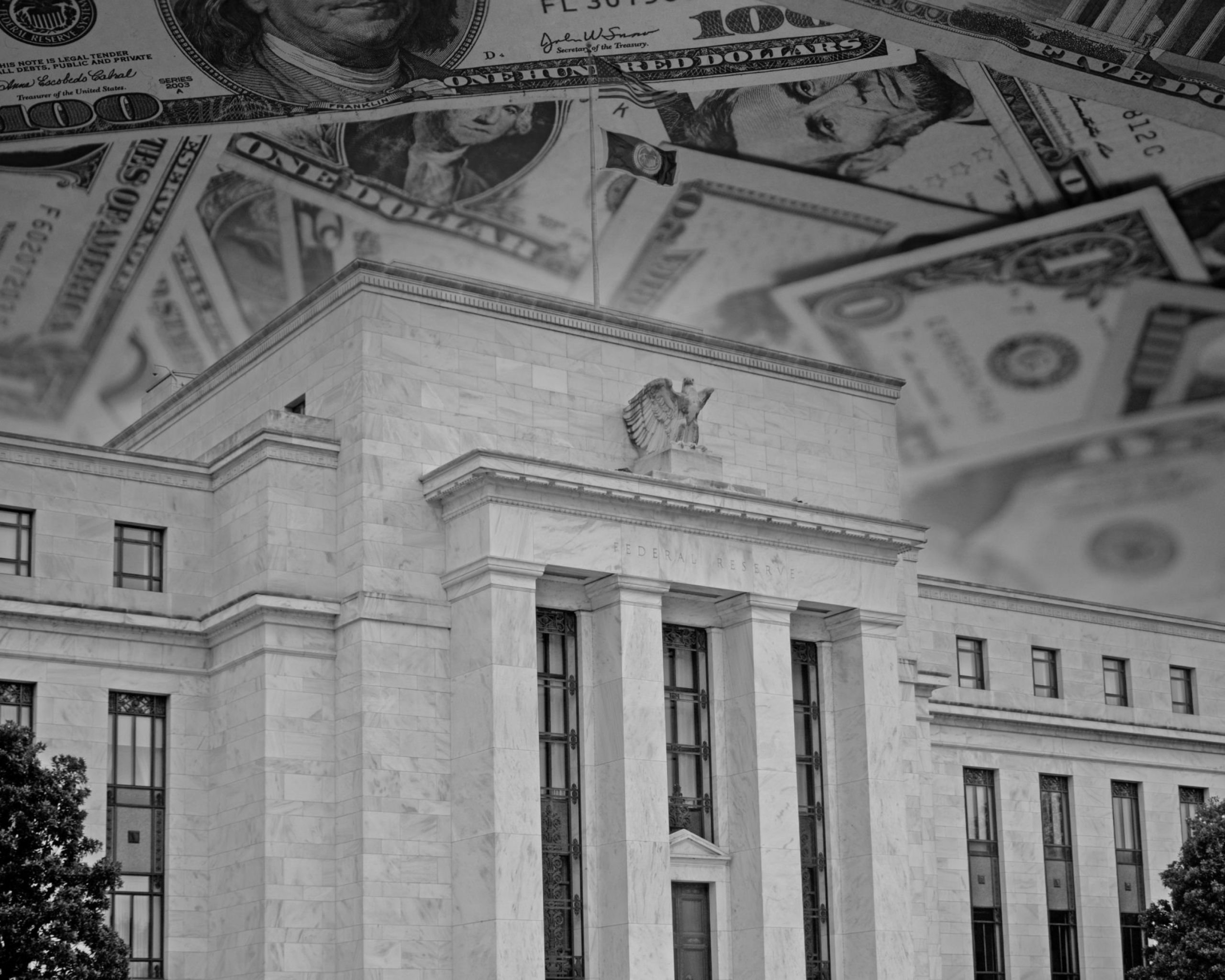In this article, we’re going to look at the many different types of interest rates that affect how economies and money markets work around the world.
Types of Interest Rates

Interest rates play a big role in the world of money, affecting things like how much it costs to borrow and how people decide to invest.
It’s important to know about the different types of interest rates, whether you’re a regular person, a business, or someone who makes rules. Different types of interest rates have different jobs and show different parts of how money works.
An interest rate is the extra money you pay when you borrow or the extra money you get when you lend. But things aren’t that simple when it comes to money. There are lots of details that make different types of interest rates. One type is the normal interest rate.
This is the basic rate you see when you want to borrow or put money in a savings account. It’s the regular payment for borrowing or lending money, without thinking about how prices might go up or how money grows.
As we dig deeper into this world of interest rates, we meet another idea, the real interest rate. This one thinks about how prices go up over time, called inflation. Inflation makes money buy less as time goes on.
So, the real interest rate tells you the real cost of borrowing or lending when you take inflation into account. This is important for people who want to keep their money safe when prices are going up.
When it comes to loans and money tools, there are fixed interest rates and variable interest rates. A fixed interest rate stays the same while you’re borrowing or lending money. This helps borrowers know how much they need to pay each month, even if the economy changes.
On the other hand, variable interest rates change based on another rate, like the main rate or the LIBOR. Variable rates can be good when you think interest rates will go down, but they can be risky if rates go up.
For businesses and people who want to borrow money, knowing the main rate is really important. The main rate is the rate banks offer to their best customers.
It’s a starting point for deciding how much interest you’ll pay on loans, like home loans, car loans, or personal loans. The main rate moves with the rate set by the central bank. It affects how much money costs for everyone.
In the world of central banks and how money works, the policy interest rate is key. Central banks, like the one in the United States, set policy interest rates to control how much money there is and how the economy grows.
By changing these rates, central banks can make the economy go faster or slower. These policy rates help decide other interest rates, which affect how much people borrow and spend.
There’s another important type called the discount rate. This is the rate banks pay when they borrow money straight from a central bank. The discount rate is usually higher than the policy interest rate.
It’s used to control how much money is around in the banking system. If the discount rate goes up, banks are less likely to borrow money, which can mean there’s less money to lend.
In the big world of money across countries, there’s the LIBOR. This is a rate used in many places. But, because there were worries that people were cheating with it, it’s being replaced by other rates.
The LIBOR, or the London Interbank Offered Rate, showed the average interest rate big banks in London were willing to give to each other. It was a way to know how much money costs for all kinds of things, like adjustable loans or complicated financial tools.
To finish, the world of interest rates is way more complex than it seems. There’s more than just one normal rate. There are many different rates because of lots of things like inflation and how banks work. From the normal rates to main rates and policy rates, every type of interest rate does something special in the big world of money.
Knowing these things helps you make smart choices with money, whether you’re someone who needs to borrow money or someone who wants to figure out the tricky world of finance. Interest rates show how money works in a complicated way, and even small changes can have a huge effect.
Factors Affecting Interest Rares

Interest rates are really important in the world of money. They affect how much it costs to borrow money and how people choose to use their money. But the reasons why interest rates change are quite complicated.
Different things mix together to make interest rates go up or down. Let’s take a closer look at these factors and see how they shape the way money works.
Central banks are like money bosses. They can change how much it costs to borrow money by setting the “boss rate.” When they want to slow things down, they make the rate higher.
If they want things to speed up, they lower it. This decision ripples through all the other interest rates, like throwing a pebble into a pond and watching the waves spread out.
Economic stuff also messes with interest rates. When the economy is doing really well, lots of people want to borrow money. So, the cost of borrowing goes up. When the economy isn’t doing so great, not many people want to borrow money, and the cost goes down.
Another thing is inflation. If prices go up a lot, the money you have might not buy as much. This makes people want more interest when they lend their money, so rates go up.
Think about risk– the chance that you might not get your money back when you lend it. If you’re lending to someone who might not be so good at paying back, you’d want something extra in return, right? Lenders think the same way.
They ask for more interest when they’re lending to riskier folks. This applies to people, businesses, and even whole countries. If a country’s money situation isn’t so good, lenders will want more interest from them.
Ever heard of the thing called supply and demand? Imagine a pizza shop. When lots of people want pizza and there’s not much pizza left, the shop can raise prices. The same happens with borrowing money. If there’s lots of borrowing and not much money to lend, lenders raise rates. If there’s more money available than people want to borrow, rates can go down.
How long you’re borrowing for also matters. Imagine you’re lending a friend money for a long time. You’d want more interest because you’re taking a bigger risk that they might not pay you back. The same goes for lenders. They want more interest for lending money over a long time.
Big things happening around the world also affect interest rates. If there’s a problem in one place, it can shake things up everywhere. It’s like when a rock falls into a pond – the ripples spread out.
When something bad happens, people might be scared and want to keep their money safe. Lenders could ask for more interest because they’re worried about not getting their money back.
We can’t forget about technology,It’s changed how people lend and borrow money. There are new ways to lend money without going to a bank. This competition can affect how much interest lenders charge. Also, things happen faster now. Information travels quickly, so when something changes, lenders adjust their rates faster.
In conclusion, interest rates might seem simple, but they’re like a puzzle with many pieces. Central banks, how the economy is doing, risk, supply and demand, loan duration, global events, and technology all play a part in deciding interest rates.
These factors mix and match, affecting whether it costs more or less to borrow money. Understanding this puzzle helps us make smarter choices with our money, whether we’re regular people, businesses, or the folks who make money rules. Interest rates aren’t just numbers – they’re the key that unlocks the doors of the money world.
Impact of Interest Rates

Interest rates have a big impact on money matters. They affect how much it costs to borrow money and what people do with their money. But the effects of interest rates are quite widespread. Let’s look into how they influence various parts of money-related decisions and the economy.
Firstly, the price of borrowing changes with interest rates. When interest rates are low, borrowing money is cheaper. People can get loans for things like houses, cars, or education without paying too much in interest.
Businesses also benefit from lower borrowing costs, which helps them invest or run their operations. But when interest rates are high, borrowing becomes more expensive, which might slow down spending and investment.
Interest rates also affect how people make saving and investing choices. When interest rates are high, it’s more attractive to put money in safe places like savings accounts or certificates of deposit.
People like saving because they can make more money with lower risk. But when interest rates are low, returns on safe savings are smaller. This might push people to consider riskier investments to get higher returns.
The housing market is sensitive to interest rate changes. When rates are low, more people want to buy homes. Mortgage rates are lower, so people can afford homes more easily.
This can drive up home prices. However, higher interest rates can make borrowing for homes costlier, slowing down the housing market and possibly causing property prices to drop.
In business, interest rates matter for financing decisions. Companies often need loans for new projects, buying equipment, and daily operations. Lower interest rates mean lower borrowing costs, which lets businesses use their resources more effectively. But higher rates can increase borrowing expenses, affecting profits and plans for growth.
Interest rates also play a role in government finances. Governments borrow money by issuing bonds for various projects. Low interest rates mean lower borrowing costs, letting governments take on more projects or manage their debt better. However, higher interest rates can raise government borrowing expenses, impacting budget plans and initiatives.
The way people spend is linked to consumer behavior and interest rates. Lower rates mean cheaper borrowing, so people may use credit more. This can boost spending as people buy things with credit. On the flip side, higher rates can make borrowing more expensive, leading to less borrowing and slower spending, which can affect economic growth.
Currency exchange rates are also influenced by rates. When a country’s rates are high, foreign investors might prefer its currency because they can make more money. This demand can make the currency stronger. But when rates are low, the currency might weaken as investors can’t make much return.
Rates also impact investments. When rates are low, returns on bonds and similar investments are lower. This might push investors to look for higher returns in riskier things like stocks. But when they go up, bonds become more appealing with higher returns, which could change where people invest their money.
In the end, interest rates are a big deal in the financial world. They affect borrowing, saving, housing, business, government, spending, currency, and investments. The way they change can impact economic growth, how people spend and save, and the stability of finances.
As people, businesses, and leaders make decisions in this complex world, understanding how they affect so many things is important for making smart financial choices and having a strong economy.
Conclusion
In the realm of finance, interest rates stand as a potent force, guiding the intricate dance of borrowing, saving, spending, and investing. As we’ve explored the types, factors that influence them, and their widespread impact, a common thread emerges – their far-reaching significance.
Whether through central bank policies, economic conditions, credit risk, or technological advancements, interest rates mold the landscape of our financial world. Recognizing their sway equips individuals, businesses, and policymakers with the knowledge to navigate economic currents wisely.
Interest rates are not just numbers; they’re the heartbeat of financial systems, resonating throughout the tapestry of economies and shaping the journey of money.
Hope you’ve learnt alot from this article!! We’re glad you did. Follow Dipprofit on all social media platforms to learn more about other exciting topics.


